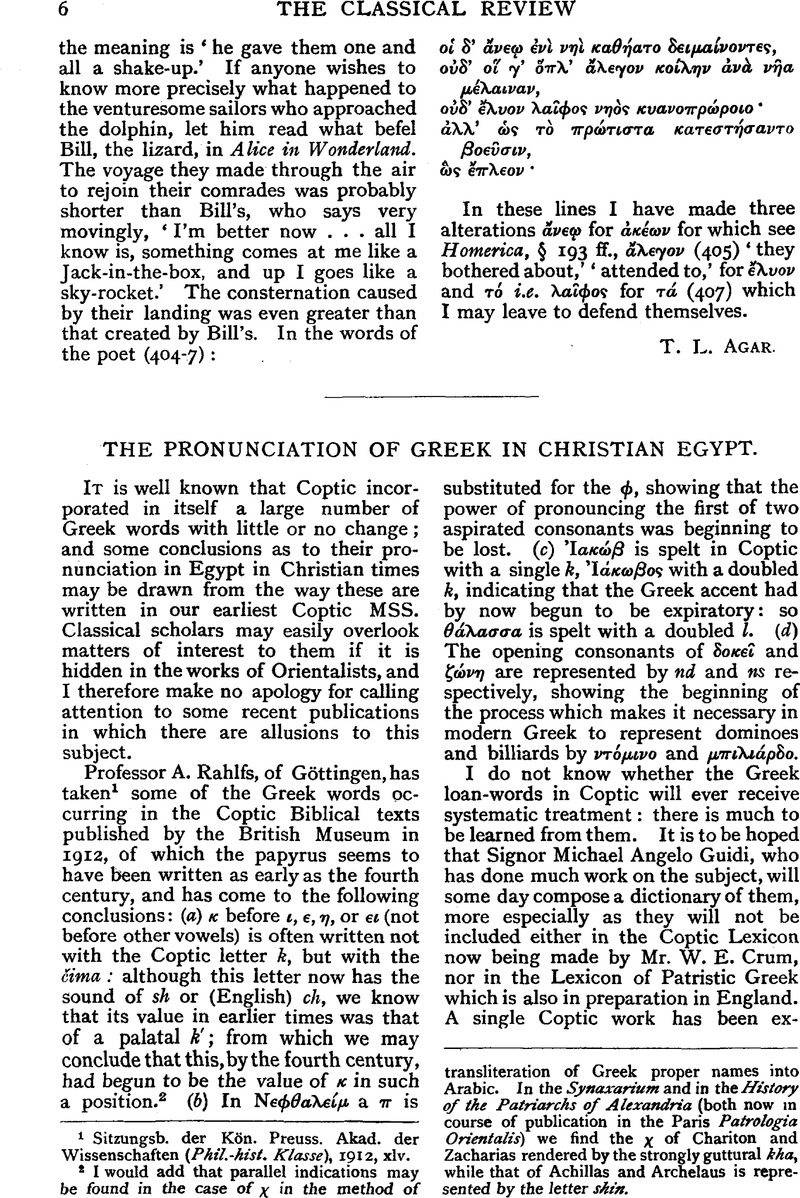No CrossRef data available.
Article contents
The Pronunciation of Greek in Christian Egypt
Published online by Cambridge University Press: 27 October 2009
Abstract

- Type
- Original Contributions
- Information
- Copyright
- Copyright © The Classical Association 1916
References
page 6 note 1 Sitzungsb. der Kön. Preuss. Akad. der Wissenschaften (Phil.-hist. Klasse), 1912, xlv.
page 6 note 2 I would add that parallel indications may be found in the case of χ in the method of is extransliteration of Greek proper names into Arabic. In the Synaxarium and in the History of the Patriarchs of Alexandria (both now in course of publication in the Paris Patrologia Orientalis) we find the χ of Chariton and Zacharias rendered by the strongly guttural kha, while that of Achillas and Archelaus is represented by the letter shin.
page 7 note 1 Denkschriften der Kaiserl. Akad. der Wissenschaften in Wien (Phil.-hist. Klasse), 1910, liv.
page 7 note 2 Der Papyruscodex saec. vi-vii der Phillippsbibliothek in Cheltenham (Schriften der Wissenschaftlichen Gesellschaft in Strassburg, 18 Heft), K. J. Trübner, 1915.Google Scholar
page 7 note 3 The circumflex is not employed, perispomenon and properispomenon words being written oxytone and paroxytone respectively: the distinction between the use of the grave and acute accents is rightly observed. Indeed, the accentuation is more correct than the aspiration, for we find such forms as ![]()


